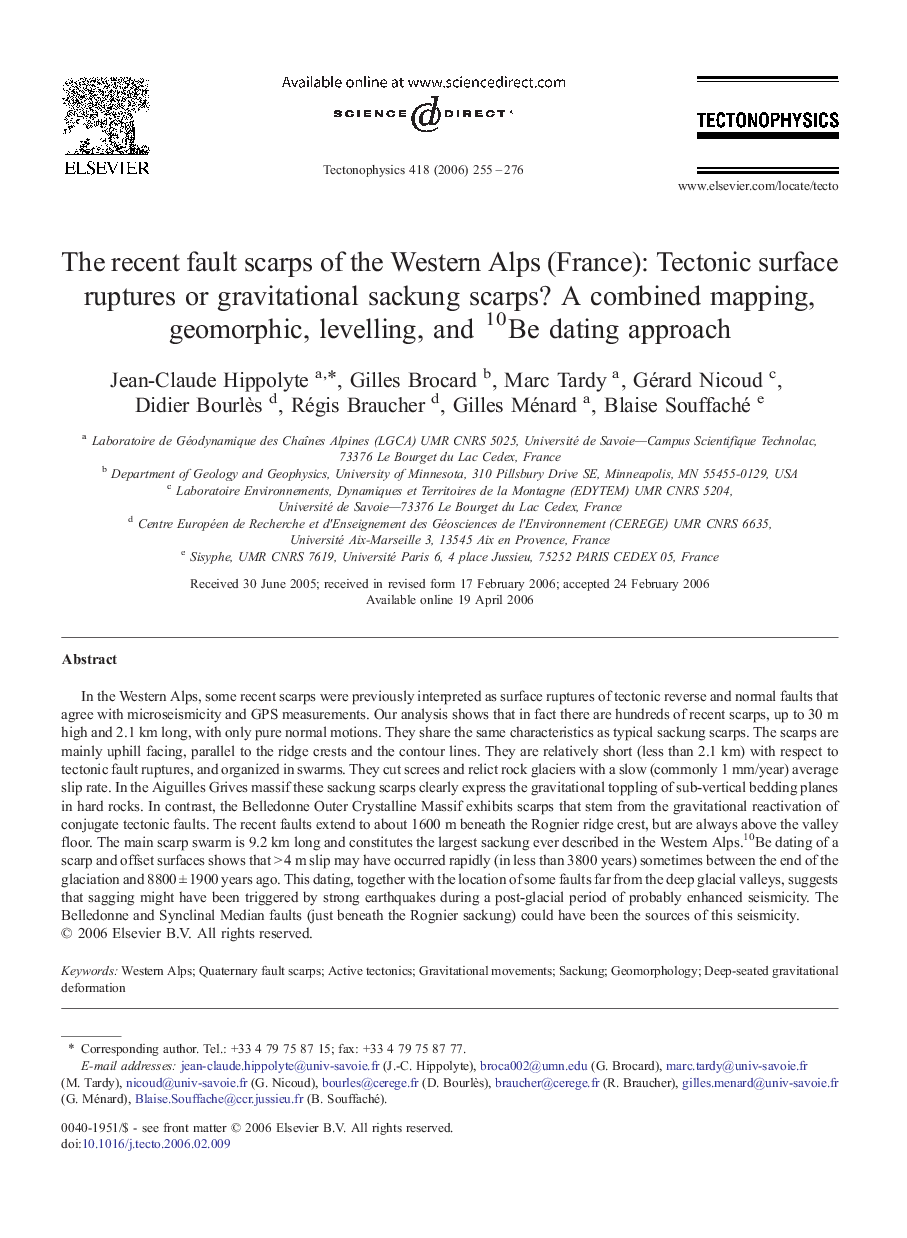| Article ID | Journal | Published Year | Pages | File Type |
|---|---|---|---|---|
| 4695173 | Tectonophysics | 2006 | 22 Pages |
In the Western Alps, some recent scarps were previously interpreted as surface ruptures of tectonic reverse and normal faults that agree with microseismicity and GPS measurements. Our analysis shows that in fact there are hundreds of recent scarps, up to 30 m high and 2.1 km long, with only pure normal motions. They share the same characteristics as typical sackung scarps. The scarps are mainly uphill facing, parallel to the ridge crests and the contour lines. They are relatively short (less than 2.1 km) with respect to tectonic fault ruptures, and organized in swarms. They cut screes and relict rock glaciers with a slow (commonly 1 mm/year) average slip rate. In the Aiguilles Grives massif these sackung scarps clearly express the gravitational toppling of sub-vertical bedding planes in hard rocks. In contrast, the Belledonne Outer Crystalline Massif exhibits scarps that stem from the gravitational reactivation of conjugate tectonic faults. The recent faults extend to about 1600 m beneath the Rognier ridge crest, but are always above the valley floor. The main scarp swarm is 9.2 km long and constitutes the largest sackung ever described in the Western Alps. 10Be dating of a scarp and offset surfaces shows that > 4 m slip may have occurred rapidly (in less than 3800 years) sometimes between the end of the glaciation and 8800 ± 1900 years ago. This dating, together with the location of some faults far from the deep glacial valleys, suggests that sagging might have been triggered by strong earthquakes during a post-glacial period of probably enhanced seismicity. The Belledonne and Synclinal Median faults (just beneath the Rognier sackung) could have been the sources of this seismicity.
